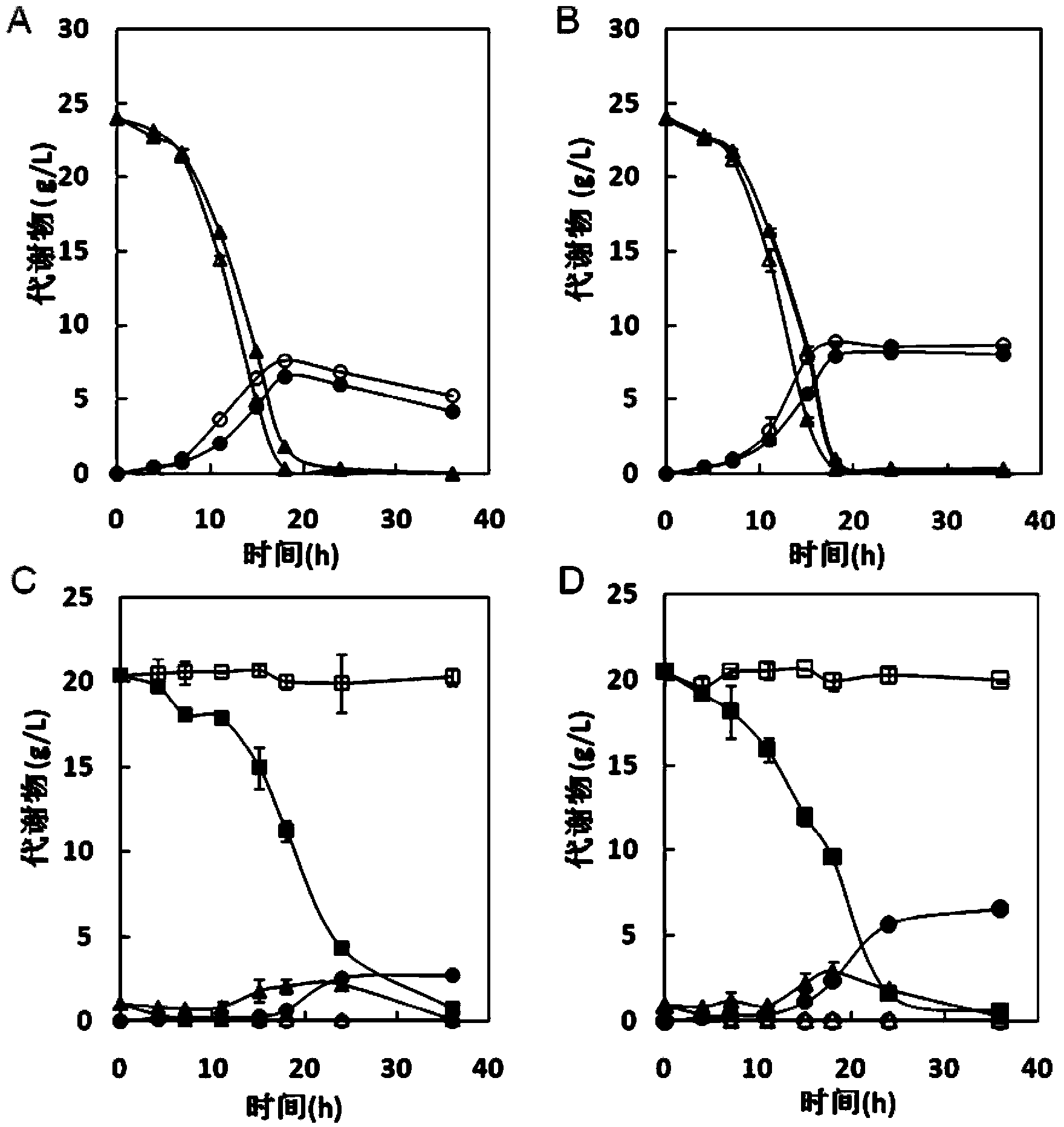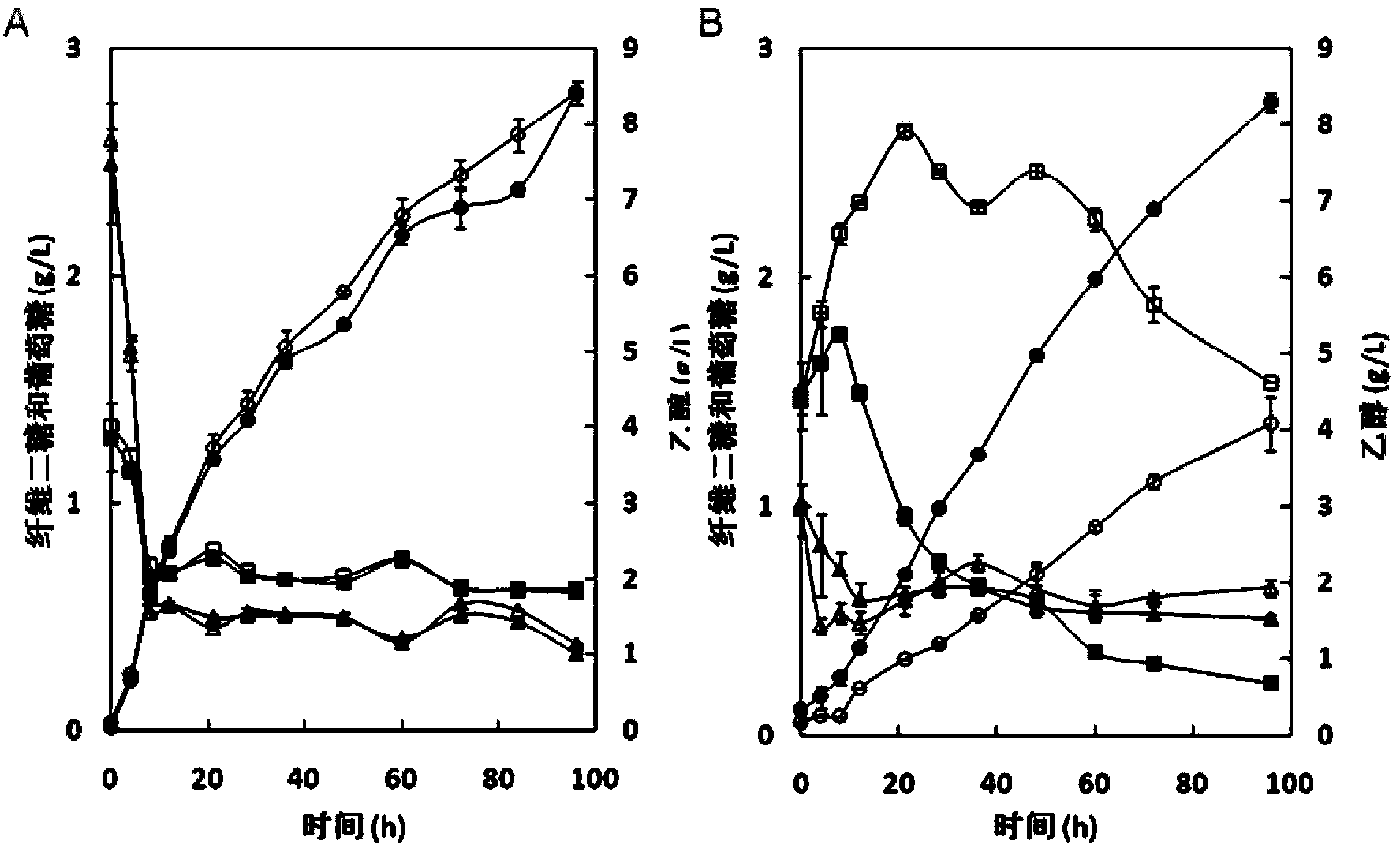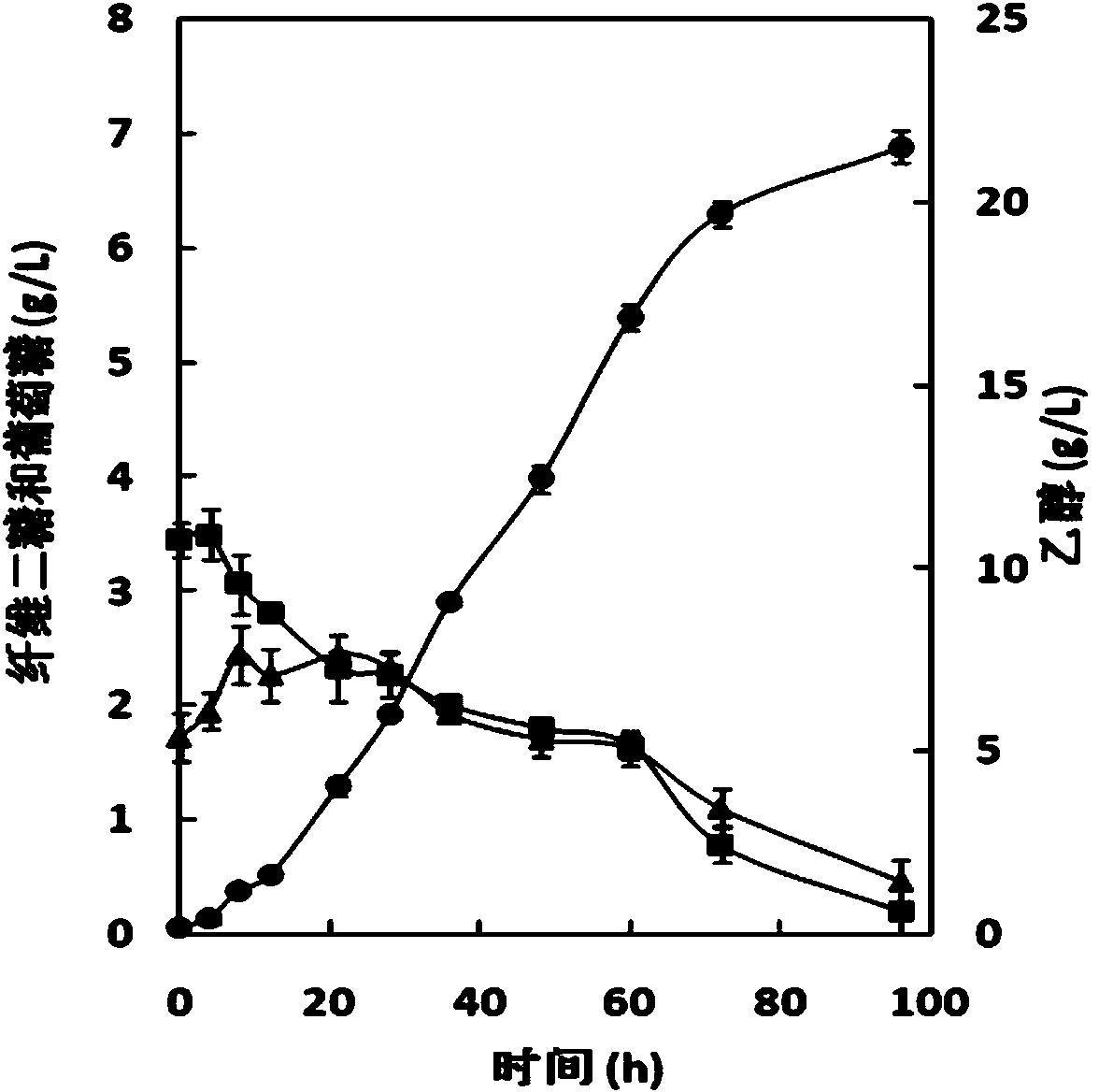Recombinant saccharomyces cerevisiae strain for continuously and efficiently secreting beta-glucosidase and applications thereof
A technology of Saccharomyces cerevisiae strain and glucosidase, which is applied in the direction of recombinant DNA technology, fermentation, fungi, etc., to achieve the effects of improving enzymatic hydrolysis efficiency, increasing ethanol production, and simplifying the production process
- Summary
- Abstract
- Description
- Claims
- Application Information
AI Technical Summary
Problems solved by technology
Method used
Image
Examples
Embodiment 1
[0031] Extract the chromosomal DNA of the yeast Saccharomyces spp. (purchased from ATCC), use the chromosomal DNA as a template, SF-F and SF-R as primers, perform PCR with Fast Pfu polymerase produced by Quanshijin Company, and the amplified product is about 2700bp Bands( figure 1 ).
[0032] Wherein, the above-mentioned SF-F and SF-R primer sequences are:
[0033] SF-F:5’-TATAACTACAAAAAACACATACATAAACTAAAAGGTACCATGTTGATGATAGTACAGC-3’
[0034] SF-R: 5’-TTTTATAATAATTATATTAATCTTAGTTTCTAGACTCGAGTCAAATAGTAAACAGGACAG-3’
[0035] The PCR reaction system is as follows: (primer concentration is 10 μM)
[0036]
[0037] PCR reaction conditions: pre-denaturation at 95°C for 2 minutes, 30 cycles: denaturation at 95°C for 20 seconds, annealing at 54°C for 20 seconds, extension at 72°C for 1min15s. Extend at 72°C for 5 minutes and store at 4°C. Gel recovery and purification of concentrated PCR products.
[0038] Example 2: Acquisition of the loxP-KanMX4-loxP knockout cassette with ...
Embodiment 2
[0039] (1) Culture Saccharomyces cerevisiae CEN.PK530-1D (Hou et al. 2012), and extract chromosomal DNA. Using chromosomal DNA as a template, TPI-F and TPI-R as primers, the Fast Pfu polymerase produced by Quanshijin Company is used for PCR, with recombination arms at both ends and G418 resistance screening marker gene fragments with loxP sites.
[0040] Wherein, the above-mentioned TPI-F and TPI-R primer sequences are:
[0041] TPI-F: 5’-ACCCATCAGGTTGGTGGAAG-3’
[0042] TPI-R: 5’-CAACGCGAAAATGACGCCTC-3
[0043] The PCR reaction system is as follows: (primer concentration is 10 μM)
[0044]
[0045] PCR reaction conditions: pre-denaturation at 95°C for 2 minutes, 30 cycles: denaturation at 95°C for 20 seconds, annealing at 54°C for 20 seconds, extension at 72°C for 1min15s. Extend at 72°C for 5 minutes and store at 4°C. Amplified gene fragments with a size of about 2300 bp were gel recovered, purified and concentrated PCR products.
[0046] Homologous recombination fra...
Embodiment 3
[0054] Carrier CPOT is single-cut with XhoI, and the 8000bp fragment obtained is the same as that of Example 1 figure 1 The primers shown with the homology arms at both ends of the plasmid amplify the expression cassette of β-glucosidase, connect it by DNA one-step isothermal ligation method, and transform E. coli Tran5α competent cells to obtain the recombinant expression vector ( Figure 4 ).
[0055] Embodiment 4: Construction of recombinant Saccharomyces cerevisiae expression strain
PUM
 Login to View More
Login to View More Abstract
Description
Claims
Application Information
 Login to View More
Login to View More - R&D
- Intellectual Property
- Life Sciences
- Materials
- Tech Scout
- Unparalleled Data Quality
- Higher Quality Content
- 60% Fewer Hallucinations
Browse by: Latest US Patents, China's latest patents, Technical Efficacy Thesaurus, Application Domain, Technology Topic, Popular Technical Reports.
© 2025 PatSnap. All rights reserved.Legal|Privacy policy|Modern Slavery Act Transparency Statement|Sitemap|About US| Contact US: help@patsnap.com



